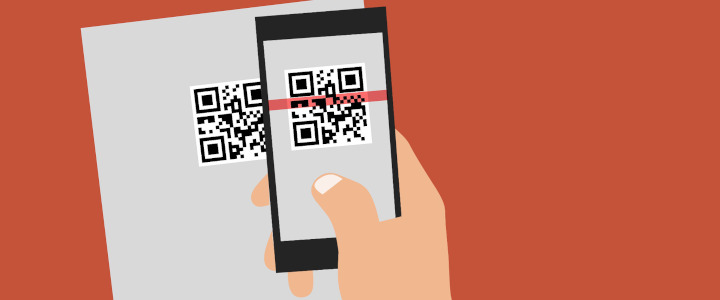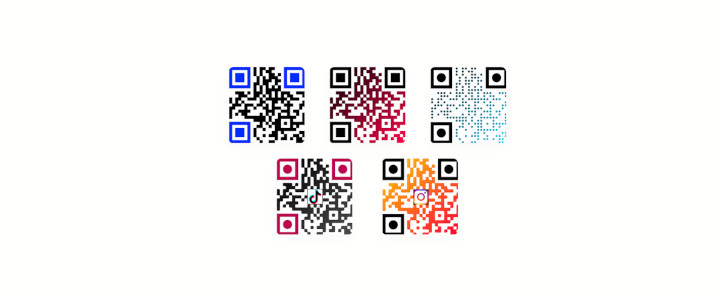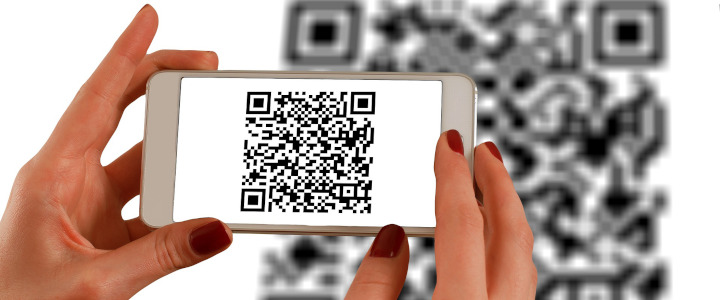QR codes are not ‘just’ quick links to some web page
QR codes are typically used to store and share small amounts of data, such as a website URL or a product serial number. They are also used to connect from physical items, such as posters or business cards, to digital content.
However, those are not the only applications for QR codes.
QR codes are also used in a variety of other applications, such as marketing, payment systems, and event ticketing.
Here are a few innovative use cases
- Art installations: Some artists have incorporated QR codes into their artwork as a way to provide an interactive element or to link to additional information about the piece.
- Funerals: QR codes have been used on funeral services as a way for attendees to access additional information about the deceased, such as a video tribute or a digital copy of the obituary.
- Education: Teachers have used QR codes in the classroom to provide students with additional, for example a QR code on a worksheet might link to a video explaining a difficult concept.
- Music: Some musicians have placed QR codes on their album covers or concert posters as a way to provide fans with exclusive content or to promote their music.
- Travel: QR codes can link to information about a destination, connections or to facilitate check-ins at hotels.
- Public transit: Some public transit systems have started using QR codes as a way to provide real-time information about bus and train schedules. Passengers can scan the code with their smartphone to see when the next bus or train is arriving.
- Wedding invitations: Some couples have used QR codes to create digital wedding invitations that can be scanned to access additional information about the event, such as the location, date, and time.
- Business cards: Instead of printing traditional business cards, some people have created QR codes that can be scanned to access their contact information and professional profile.
- Resumes: Job seekers have used QR codes to link to or download digital resumes that can be easily shared and accessed by potential employers.
- Scavenger hunts: QR codes have been used as part of scavenger hunts, with each code leading to a new clue or location.
- Escape rooms: QR codes have been used in escape rooms as a way to provide clues and puzzles for players to solve. For example, a QR code might link to a video that provides a hint about the next step in the game.
- Retail: QR codes have been used in retail settings as a way to provide more information about products such as details about its features, specifications, or warranty.
- Hospitality: During the past few years restaurants have moved their menus online to allow customers to place their orders directly from their smartphone.
- Product reviews: QR codes can be used to link to customer reviews or ratings for a particular product. This can be a helpful resource for customers who want to know more about the product before making a purchase.
- Special offers: QR codes can be used to offer special discounts or promotions to customers who scan the code with their smartphone. This can be a effective way to drive sales and encourage customers to make a purchase.
- Mobile payments: QR codes can be used to facilitate mobile payments, allowing customers to make a purchase directly from their smartphone by scanning the code and entering their payment information. This can make the checkout process faster and more convenient for customers.
- Sending emails, SMS or WhatsApp messages: When these QR codes are scanned they can launch the correct app on the user’s phone and pre-load the message with the correct contact details, subject info and draft text ready to edit and send.
Static vs Dynamic QR codes
Business have many innovative ways of using QR codes.
What makes them so powerful is that some QR codes can be modified or redirected even after they have been published. Those QR codes remain forever up-to-date.
- ‘Static’ QR codes are created with a fixed set of data and cannot be changed once they have been generated. These codes are often used to link to a specific webpage, provide event details, show site WiFi credentials or to display a specific message when scanned. Because the data in a static QR code is fixed, the code itself does not change, even if the content that it links to is updated.
- ‘Dynamic’ QR codes, on the other hand, are QR codes whose details can be edited and updated after they have been generated. These codes are created using dedicated platforms like now-click.me so that the user can change the data that the code stores. Dynamic QR codes are often used in marketing and advertising campaigns, as they can be easily updated to link to different content or to track the performance of the code. Examples include business cards, website links to the ‘latest’ blog post of special offers, emails templates, SMS or WhatsApp messages, downloads or cryptocurrency wallet details.
These seemingly humble QR codes are truly powerful and versatile. Every business can benefit from them some way or other.


